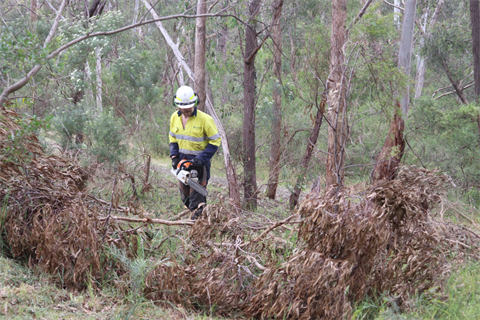What Council does before emergencies

To prepare for various emergencies we work closely with the community and other agencies (such as the CFA, Department of Environment, Land, Water Planning, Department of Health and Human Services).
We are continuously improving our Municipal Emergency Management Plan. This is the key document that we operate under.
Key areas of the Municipal Emergency Management Plan include:
Education
We are always looking for ways to engage with and educate the community. We do this in collaboration with other emergency service agencies and the community, with the aim of encouraging residents to develop a plan and to connect with their community.
For more information about how Council is facilitating community-led bushfire preparedness, read about our Communities First program.
Hazard inspections
Council’s Municipal Fire Prevention Officers (MFPOs) carry out an annual Fire Hazard Inspection program on private properties, commencing early- to mid-November each year.
The Fire Hazard Inspections continue throughout the summer period, or may continue into early autumn depending on weather.
If the Fire Prevention Officer deems a property to be an unacceptable fire risk, a Fire Prevention Notice will be issued. This requires the property owner to take action to reduce the risk.
Properties will also be inspected at the request of residents who report fire hazards.
Find out more our Fire Hazard Inspection program and Fire Prevention Notices.
Roadside slashing and fuel management
Our Bushfire Mitigation Works program is in place to reduce the fuel loads along Council roadsides and on Council property.
Extensive mapping and survey work is carried out to determine focus areas.
We work with other land owners (private and government) to achieve the best outcomes for our community.
Find out more about how Council prepares for fire.
On call
Council have staff that are on call 24/7, all year round.
If a Council Emergency Operations Centre and/or Relief Centre is required on a day of higher threat (for example a severe bushfire threat day), a select group of Council Emergency Management Workforce are also placed on call.
Emergency management assets
Council is responsible for key emergency management assets. This includes the maintenance of existing assets and installation of new assets (as requested by CFA brigades).
Assets include:
- Concrete water tanks
- Water fill Points (including signage)
- Fire access tracks
- Helipads
- Fire restriction signage
- Fire hydrants
- Extensive roadside and reserve slashing
You may also be interested in...